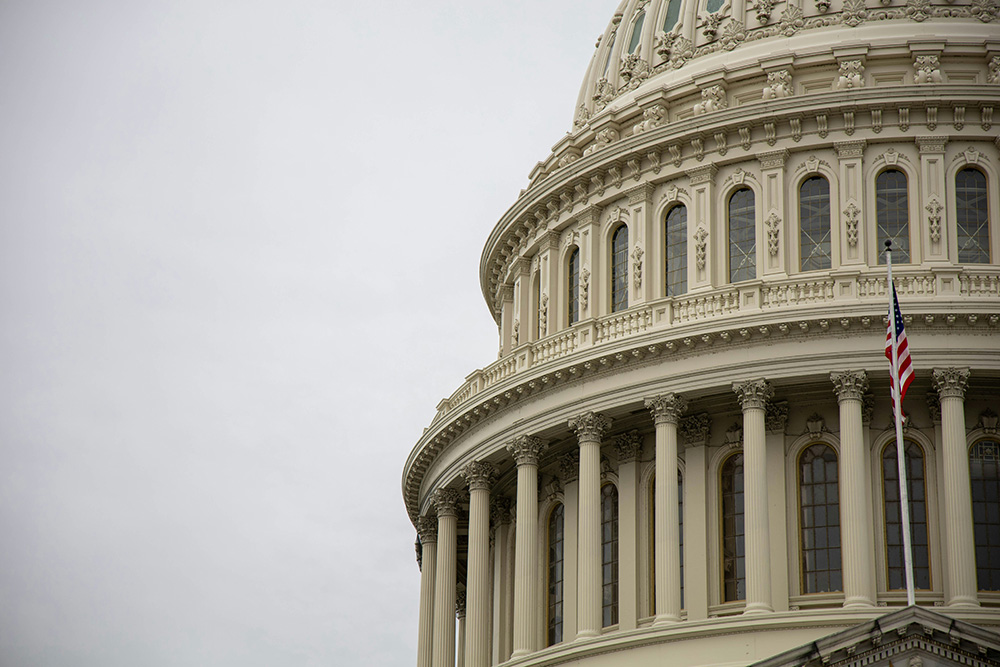New IPR Research: April 2024
Get all our news

This month’s new research from our faculty experts explores partisan disparities in the use of science in policy and how immigration enforcement affects public safety. Their research also creates a comprehensive dataset of federal laws and investigates whether “skin-deep resilience” emerges in childhood.
Politics, Institutions, and Public Policy
Partisan Disparities in the Use of Science in Policy
Scientific research is essential to shape policy decisions, but little is known about how policymakers from different political parties use research. In a working paper, political scientist and IPR associate Alexander Furnas and his colleagues investigate the partisan differences in the use of science in policy across the federal government and ideological think tanks in the U.S. The researchers analyzed a dataset of 49,345 congressional committee reports and 191,118 documents published by 121 think tanks from 1995 to 2021. They matched the scientific references in these documents to a large-scale publication and citation database with over 120 million scientific citations. They find that the use of science in policy documents has increased from 5% in 1995 to nearly 30% in 2020—a roughly sixfold increase. Democratic-controlled congressional committees and left-leaning think tanks are more than five times as likely to cite science, compared to Republican and right-leaning congressional committees and think tanks, and Democrats cite science with higher impact. The two parties cite very different scientific sources, with only about 5% cited by both parties. The researchers also surveyed roughly 3,500 political elites and policymakers about their trust in scientists and scientific institutions, finding that Democrats are more likely to trust science than Republicans. The results show that science is increasingly used to inform policymaking, but there are partisan differences in trust and use of science, which could undermine bipartisan efforts for constructive policy solutions.
How Does Immigrant Enforcement Affect Public Safety?
Immigrant enforcement policies are often promoted as a way to improve public safety, but are they effective at achieving that goal? In a working paper, IPR economist Elisa Jácome and her colleagues study the impact of the U.S. Secure Communities (SC) program on public safety. The SC program increased information sharing between local law enforcement and federal immigration authorities and was implemented across the country between 2008 and 2013 in a staggered roll-out allowing the researchers to compare the policy’s impact in different counties over time. The researchers use data from the National Crime Victimization Survey (NCVS), a nationally representative survey asking individuals whether they had been the victim of a crime and whether they reported it to police. Because 90% of deported individuals are of Hispanic ethnicity, the researchers compared the impact of the SC program separately on Hispanic and non-Hispanic individuals. The authors find that Hispanic individuals were 30% less likely to report crimes to the police after SC was implemented. Contrary to the goals of the program, Hispanic residents were also significantly more likely to be victims of crimes. They estimate that the introduction of the SC program resulted in 1.3 million additional crimes against Hispanics. Non-Hispanic individuals overall were not more likely to be victims of crimes, except in areas with a high population of Hispanic residents. The researchers’ evidence indicates the decline in reporting is a key driver of the increase in crimes against Hispanics and that trust in public institutions, including law enforcement, is crucial for public safety.
Creating a Comprehensive Dataset of Federal Laws
Despite its obvious value to scholars studying American politics and law, no easily accessible, comprehensive, digital dataset of all U.S. federal laws since 1789 exists. IPR political scientist Brian Libgober offers an open-source database he built to remedy this, which he introduces in Scientific Data. While acknowledging earlier attempts at compiling a complete dataset, he notes their shortcomings, including inconsistent inclusion criteria, as well as incomplete transparency and comprehensiveness. Building the database required clearly defining what a “law” is within the context of U.S. federal policymaking over the course of centuries, as well as resolving many inconsistencies in citation systems over the years. The code in R used to create the dataset from original sources is also publicly accessible.
Social Disparities and Health
Skin-Deep Resilience in Childhood
Individuals who exhibit positive coping skills also tend to display good mental health in adulthood, even sometimes when they experience adversity during their childhood years, such as coming from a low socioeconomic background. However, this resilience appears to primarily emerge with respect to psychological well-being, as their physical health profiles tend to indicate poorer health—a phenomenon commonly labeled "skin-deep resilience." But does this pattern appear in childhood? In the Journal of Child Psychology and Psychiatry, IPR health psychologists Edith Chen, Greg Miller, and their colleagues test this hypothesis to determine if “skin-deep resilience” emerges in childhood. The researchers collected and analyzed data from 165 Black and Latinx children aged 8–16 in July 2021–May 2022. Participants reported on their use of John Henryism coping behaviors—where high effort is used to handle challenges—along with their levels of depression and anxiety. Guardians provided information on their socioeconomic status (SES). The researchers measured participants’ blood pressure, waist circumference, blood sugar, triglycerides, and cholesterol (cardiometabolic risk). The study found that in children with high levels of high-effort coping, low SES was not associated with mental health, but was associated with increased cardiometabolic risk. In children without high-effort coping, low SES was linked to internalizing mental health symptoms, but not to cardiometabolic risk. This suggests a link between socioeconomic disadvantage and cardiometabolic risk for children with high-effort coping tendencies. Public health efforts should consider the mental and physical health consequences of challenging environments, and promoting the combination of positive physical and mental health early in childhood is crucial for youth of color.
Photo credit: Unsplash
Published: April 24, 2024.


